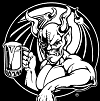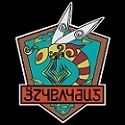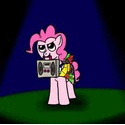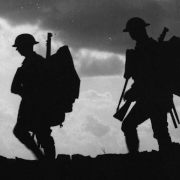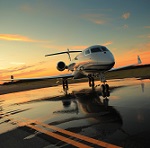|
Night10194 posted:It's really funny when you get the guys in chat going on and on about how much of a huge shame it was the US 'dishonorably' battled the Yamato with cowardly carriers instead of a massive battleship engagement and how it was because they were afraid of how invincible it was. It wasn't even about that. Spruance, who commanded the American fleet in Operation Iceberg, was a battleship admiral. Once the Yamato was spotted, the fleet-wide order was to allow her to proceed. Spruance ordered a battleship force to re-task from shore bombardment to meet her in battle. Task Force 54 consisted of the Idaho, New Mexico, Tennessee, West Virginia, Maryland, and Colorado under Deyo. Mitscher, the carrier Task Force 58's commander interpreted his orders to provide CAP as not forbidding an attack on the Yamato, and launched planes to sink her, informing Spruance only after the attack was already in the air. Task Force 54 was in fact ordered to form a battle line before the airstrikes were even launched. No fear there at all. Spruance intended to sink Yamato in an extremely one-sided surface action from the start. ranbo das posted:It doesn't matter whether the Yamato was a super battleship or helpless, it was outdated simply because why use a battleship when a carrier was a better choice. Japan basically spent years and years developing this super sword to fight with but that didn't matter because in the meantime the US was building guns. True in a way. Yamato was certainly a waste of resources, but the Americans didn't build particularly many carriers during that time, only starting constructing a massive fleet of CV after the war had began.
|
|
|
|

|
| # ? May 12, 2024 00:00 |
|
Because they didn't model the super-heavy AP shells for the 16 inch guns. Thus they kind of suck poo poo.
|
|
|
|
TheDemon posted:True in a way. Yamato was certainly a waste of resources, but the Americans didn't build particularly many carriers during that time, only starting constructing a massive fleet of CV after the war had began. They ordered those carriers before the US entered the war, though. Hell, they ordered them before Taranto.
|
|
|
|
Lord Koth posted:Please don't be stupid in return and over-exaggerate. Do you know what the absolute largest advantage RADAR FCS had over sight based ones? It's called during night battles, which you may recall Surigao Straight was. You may also recall that they had a heavy numerical in every category, and the IJN force was already in disarray by the time the battleships actually opened up due to constant destroyer attacks. Given all the time and warning they had to prepare they also crossed Yamashiro's T, and the battleships that engaged her were of the same era - in actual fact they were all newer - with similar gun caliber and armor thickness. Chill. Now, in response to your comments, even a handful of WW1 era battleships probably would've likely beat the Yamato modern fire control. First, we know exactly how the Yamato would've performed in a daylight battle because it was in one. In the battle off Samar it engaged at 31km against escort carriers. It did manage to score a few hits on the Gambier Bay, though this is somewhat unclear. On the other hand, during Guadalcanal, the Washington was able to achieve a hit rate of 12% on the Hiei, and, once again, hits were scored by dreadnaughts using fire control superior to what was available at Guadalcanal on the first shot at Surigao. Part of this difference is due to training. The Yamato rarely did gunnery training because running the 18.1s required massive amounts of oil be constantly poured over them to keep the machinery running, making it extremely resource intensive. Second, the Japanese had grossly inferior fire control for two reasons. First, radar fire control not only reduces human error, but is capable of producing accurate information even under adverse conditions Japanese fire control was entirely optical throughout the war. Second, American fire control had much more stable vertical elements, which allows a solution to be maintained even when a ship was performing high speed maneuvers. Now, would a fight between the Yamato and, lets say, West Virginia been a sure bet? No, the Yamato could always have gotten a lucky hit, or the West Virginia could've failed to disable the Yamato sufficiently before it closed range, but all it takes is a few good hits and suddenly the Yamato has lost turrets, fire control, speed, or bridge function, any of which is effectively a lost battle. The head to head Iowa vs Yamato comparisons tend to focus on a lot of engineering details while ignoring information from actual battles regarding how ships performed. Adventure Pigeon fucked around with this message at 02:45 on Oct 16, 2015 |
|
|
|
Lord Koth posted:Remodeled WW1 battleships had neither the armor, armament or range to reasonably engage Yamato safely even with numbers. True or not, it is historical fact that Spruance intended the Fifth Fleet to engage Yamato with remodeled WW1 battleships and their escorts, at a considerable numbers advantage. I presume that he wasn't crazy and believed that they would in fact sink Yamato without disproportionate casualties.
|
|
|
|
TheDemon posted:True or not, it is historical fact that Spruance intended the Fifth Fleet to engage Yamato with remodeled WW1 battleships and their escorts, at a considerable numbers advantage. I presume that he wasn't crazy and believed that they would in fact sink Yamato without disproportionate casualties. Yeah, the bit about range is entirely wrong. The 16"/45 gun had a range of 35km, and at Surigao the West Virginia achieved a firing solution at 30,000 yards. The Yamato's main guns had a technical max range of 42km, but the Japanese didn't believe they'd be able to effectively engage until the range was below 27km. So even by the Japanese estimate, the Yamato actually had a shorter engagement range than the American battleships. Adventure Pigeon fucked around with this message at 02:47 on Oct 16, 2015 |
|
|
|
They wouldn't hit at 35km either though. While automated fire control and radar gave them an advantage it wouldn't make shells magically hit their target. USS Washington vs. Kirishima was at 7.7km range for example. The US Navy pre-war wasn't really better at their naval warfare expectations than the japanese really. Both sides built a lot of Battleships and intended for great battles between battlelines. The war proved that air force reigned surpreme though and the USA had a lot more resources, manpower and technology to press their carrier advantage. The fact alone that he intended to engage the Yamato in a Battleship duel even with numerical advantage while air strikes have proven themselves to be far more effective doesn't really speak for his decisions.
|
|
|
|
Junkozeyne posted:They wouldn't hit at 35km either though. While automated fire control and radar gave them an advantage it wouldn't make shells magically hit their target. USS Washington vs. Kirishima was at 7.7km range for example. The US Navy pre-war wasn't really better at their naval warfare expectations than the japanese really. Both sides built a lot of Battleships and intended for great battles between battlelines. The war proved that air force reigned surpreme though and the USA had a lot more resources, manpower and technology to press their carrier advantage. Yeah, it probably wouldn't have hit at 35km, but a firing solution at 30km implies they were confident in a hit. They did manage to score a hit at 22km on the first salvo, though. I agree wholeheartedly, air power makes all of this pointless. It's a neverending internet argument, though. I'm mostly just mocking the wehraboo idea that the Yamato was the ultimate battleship. The popular way of comparing the Yamato to any other battleship is by listing their stats one by one, counting up the number where the Yamato is best (guns, armor, stability, sometimes speed), and then declaring a winner based on the final score with no appreciation for how much each factor actually matters. I've seen people point out that the Iowa might've had better radar fire control, but the Yamato had better optical fire control, therefore they cancel each other out. The only way to get some idea about which would win is to look at actual battles and see what factors played into them, but even then that's not reliable. Conditions change and so does luck.
|
|
|
|
TheDemon posted:True or not, it is historical fact that Spruance intended the Fifth Fleet to engage Yamato with remodeled WW1 battleships and their escorts, at a considerable numbers advantage. I presume that he wasn't crazy and believed that they would in fact sink Yamato without disproportionate casualties. Technically, half of TF 54 were Colorado-class, which were post-WW1 designs, incorporated lessons learned during wartime, and mounted 16" guns rather than the 14" ones found on all prior designs. While 1-on-1 I'd still bet on Yamato over them, multiple of them with support is a different matter. Their guns may not be the Mark 7 version and its super-heavy shells, but they're still decent 16" guns and would perform far better than a lower caliber. It's the remodeled WW1 battleships, aka the ones with 14" guns, that I was calling out. Could 14" guns deal damage? Of course, but barring rather lucky hits it would have taken a while to render it combat ineffective, and you weren't likely to get any relevant penetrations before Yamato got in effective range herself. In tandem with ships that actually can penetrate the armor they help add weight of fire and damage to what they can, but that's not what the initial comment was. As mentioned this is all academic and theoretical of course, as carriers had long rendered battleships obsolete and even if it had come down to a fleet battle Yamato would have been heavily outnumbered, but radar is not some miracle formula that would let some random WW1-era battleship like a Pennsylvania- or Tennessee-class kill it with impunity with any real likelihood. Equipment, along with crew training and experience, makes a difference of course, but that's needed in said matchup to even narrow the gap between them. TheDemon posted:True or not, it is historical fact that Spruance intended the Fifth Fleet to engage Yamato with remodeled WW1 battleships and their escorts, at a considerable numbers advantage. I presume that he wasn't crazy and believed that they would in fact sink Yamato without disproportionate casualties. I probably should have specified, but in a theoretical engagement between, let's say Pennsylvania, New Mexico, Idaho and Mississippi, and Yamato, they might win - it's 4 against 1, after all - hell they might even be relatively likely to win, but I could easily see multiple being lost, which while being a victory by any standard due to ages and national productivity, would not exactly be one I'd be advertising either. Increasing the disparity in numbers even more, adding post-WW1 battleship like the Colorado-class, and adding a large surface fleet skews the scale far more. Adventure Pigeon posted:Yeah, it probably wouldn't have hit at 35km, but a firing solution at 30km implies they were confident in a hit. They did manage to score a hit at 22km on the first salvo, though. The problem I had was there's no one here claiming that Yamato was the ultimate battleship - hell, that's not what I'm doing - so making massively hyperbolic statements like "a WW1-era battleship would have been able to pound it into oblivion" and coming off as serious on that point are just silly. Also, the "mocking of the wehraboo idea" in general over that page was veering heavily in the direction of "Axis design was complete poo poo and lost to everything" which is not true. They were hardly the super machines of death that those kinds portray them as, but neither were they completely helpless showpieces either. There was fear of Tigers on both fronts and, while I'm fully aware both that much of their reputation came about more due to the fact that they tended to have the best crews moreso than their tanks were that much superior in-and-of themselves and that the majority of kills attributed to Tigers(or Panthers, for that matter. Hell, might as well toss in basically every other tank too) were in fact likely concealed AT guns or TDs, it does not change the fact that if they were the pushovers most of those sorts of things imply, it would have never developed in the first place. Lord Koth fucked around with this message at 04:28 on Oct 16, 2015 |
|
|
|
Ship sperging? Great, my chance to ask some questions and learn something. How much was damage control a factor? I heard that japanese carriers sunk rather easily and the japanese were suprised to see some american ships still afloat that they already assumed sunk. Was that US advantage purely a carrier specific one, or were other japanese combat vessels just as 'fragile'. Fragile is probably not the right term, as Monsters like the Yamato still carried lot of armor, but was damage control something that japan was not that great in in general, or where only the carriers badly designed. Asking, cause I'm not a ship sperg and the source I read specifically dealed with carriers of the time.
|
|
|
|
It was an institutional problem. Damage control wasn't considered that important, nobody was cross-trained in it, and the personnel were often expended.
|
|
|
|
wdarkk posted:It was an institutional problem. Damage control wasn't considered that important, nobody was cross-trained in it, and the personnel were often expended. Compounded with the fact that the US' logistical capabilities outstripped the Japanese navy's by several orders of magnitude, the US carriers and their escorts could stay at sea indefinitely, always on the offensive until battle damage forced them to retreat from a fight for repairs or sank them. After Pearl Harbor, the US never had its carriers nor really its fleet in port except to repair battle damage that could not be repaired at sea. They never needed the fleet to make port for supplies due to having developed the (at the time highly-classified) CONREP alongside replenishment, which allowed them to move supplies and fuel to ships at over double the speed of a stern replenishment, (and much much faster than replenishing in port) which is what the Japanese, the British, and the Germans used. CONREPs were (and still are) dangerous as hell, and other nations regarded them as impossible, but they definitely helped swing the outcome of the war solidly in the US' favor. orange juche fucked around with this message at 05:57 on Oct 16, 2015 |
|
|
|
UNREP (CONREP) is loving scary. It's truly impressive to watch the bridge team during UNREP. Amazing what an 18 year old and some 23 year Olds can do controlling hundred of thousands of tons.
|
|
|
|
I think one of the most dangerous aspects of the UNREP is that because of physics reasons, there's suction between the ships. If the butts of the two ships start to get close, there's a temptation to try and straighten out by turning towards the other ship. The correct move is to turn away.
|
|
|
|
Dr. Arbitrary posted:I think one of the most dangerous aspects of the UNREP is that because of physics reasons, there's suction between the ships. bernoulli
|
|
|
|
Feindfeuer posted:Ship sperging? Great, my chance to ask some questions and learn something. Taiho was probably lost entirely due to poor training of the crew in damage control after taking a single torpedo hit. Though it is often said that it has "poor" design, for WW2 it was rather good and with a more experienced crew it could have probably been saved. Though by 1944 experienced crew didn't come easy. Other than that I don't think so that IJN carrier were that much more fragile than their US counterparts though as others said they hadn't that much presence on sea than their US counterpart. What broke the IJNs neck was not fragile design it was Midway, with their main carriers (Akagi, Kaga, Hiryu, Soryu) lost. Shokaku and Zuikaku (same class) took both heavy damage during the war and managed to survive quite a bit though they got sunk eventually.
|
|
|
|
Lord Koth posted:There was fear of Tigers on both fronts ("Fear" is a pretty worthless metric) Darkrenown fucked around with this message at 10:18 on Oct 16, 2015 |
|
|
|
Darkrenown posted:
But it's a strong debuff that reduce crew efficiency by 70%, morale by 50% and accuracy by 15%. Related, how much damage would a tank/anti-tank gun actually do to a ship? A destroyer would probably feel it, but what about a heavy cruiser or even a battleship?
|
|
|
|
Dunno-Lars posted:But it's a strong debuff that reduce crew efficiency by 70%, morale by 50% and accuracy by 15%. Bugger all unless it hit the right spot. Even the biggest fantasy guns from WoT are smaller than high tier cruiser guns.
|
|
|
|
Junkozeyne posted:They wouldn't hit at 35km either though. While automated fire control and radar gave them an advantage it wouldn't make shells magically hit their target. USS Washington vs. Kirishima was at 7.7km range for example. The US Navy pre-war wasn't really better at their naval warfare expectations than the japanese really. Both sides built a lot of Battleships and intended for great battles between battlelines. The war proved that air force reigned surpreme though and the USA had a lot more resources, manpower and technology to press their carrier advantage. Arent't there recorded training hits for the Iowas at 30-40km ranges? I tought that was the whole point of the Mark7 with their shells, that they actually had that engagement range.
|
|
|
|
One of the longest-range naval combat hits ever was Warspite firing at the Giulio Cesare at ~24km. There are other claims but they all are around that mark. navweaps has a table that claims a naval war college study expected a hit percentage of 1.4 to 2.7 against a target the size of Bismarck at 27.5km. Maybe after they upgraded the weapons of the Iowa post-war they could have been able to reliably outrange the Yamato though I doubt it.
|
|
|
|
Lots of changes coming: http://worldofwarships.eu/en/news/cbt/dev-bulletin-051/ "Now the simple and annoying (for many players) trick of dropping torpedoes directly at a ship's board will become less effective."
|
|
|
|
Junkozeyne posted:Taiho was probably lost entirely due to poor training of the crew in damage control after taking a single torpedo hit. Though it is often said that it has "poor" design, for WW2 it was rather good and with a more experienced crew it could have probably been saved. Though by 1944 experienced crew didn't come easy. Other than that I don't think so that IJN carrier were that much more fragile than their US counterparts though as others said they hadn't that much presence on sea than their US counterpart. What broke the IJNs neck was not fragile design it was Midway, with their main carriers (Akagi, Kaga, Hiryu, Soryu) lost. Shokaku and Zuikaku (same class) took both heavy damage during the war and managed to survive quite a bit though they got sunk eventually. Japanese carriers were straight up tinderboxes compared to US ones, especially after Coral. First, the Japanese didn't figure out how important voiding the fuel tanks when enemy planes were spotted was. Second, the US carriers had much better subdivision in their mains and like all US ships were full of man portable pumps so it was way more difficult to deny them firefighting water. Next, the US carriers had their hangars as superstructure and could open the sides of their hangars. It's generally really good to be able to push burning planes (which are mostly fuel and aluminum, both of which suck to have onboard in a fire) out and get water from nearby ships in. The upshot of that and a few other things is things like the Japanese losing the Akagi to a single bomb hit and Soryu to three hits while the Yorktown absorbs three bomb hits, gets steam up, takes two torpedoes, gets left unmanned overnight, and was in the process of being saved when a submarine hit her with two torpedoes and the damage that likely put her over the edge, the destroyer providing power getting sunk and the entire depth charge load cooking off, which finally sunk her. The only notably good.performance I can think of is Shokaku taking three bombs at Santa Cruz. For other ships, the situation was a lot less dire. There were still some issues with damage control training and lacking some tools (as well as longitudinal bulkheads if I remember right, which means damage control has to be on the ball to avoid capsize), but it wasn't nearly so lopsided in ability to take a hit. The big problem for Japanese cruisers and destroyers was the same as the problem for US forces fighting them at night. Every Japanese ship shy of a battleship carried a rack of long lances, so they all had an eye-watering amount of high explosive and pure oxygen on board. Losing cruisers to dive bomber hits and 5" shells that get lucky is the price to pay for the sort of firepower that happened to the US at Tassafaronga. Japanese ships also tended to bea bit underbuilt to fit the maximum firepower possible under the treaty limits, which contributed to major rebuilds after Tomozuru capsized, Mogami warped her frame and ruptured her fuel tanks in trials, Murakumo messes her structure right up on high speed trials, and the fourth fleet incident happens. That last is a fleet exercise getting hit by a typhoon and having a much worse time of it than the US did with Cobra. Ships of all types got severely damaged, two destroyers have their bows fall off(!), another was in danger of losing its fantail, bridges get crushed, and generally things go terribly. However, by wartime they had been rebuilt, and weren't suffering nearly as much from heavy use of primitive welding and the like. xthetenth fucked around with this message at 15:47 on Oct 16, 2015 |
|
|
|
Junkozeyne posted:Taiho was probably lost entirely due to poor training of the crew in damage control after taking a single torpedo hit. Though it is often said that it has "poor" design, for WW2 it was rather good and with a more experienced crew it could have probably been saved. Though by 1944 experienced crew didn't come easy. Other than that I don't think so that IJN carrier were that much more fragile than their US counterparts though as others said they hadn't that much presence on sea than their US counterpart. What broke the IJNs neck was not fragile design it was Midway, with their main carriers (Akagi, Kaga, Hiryu, Soryu) lost. Shokaku and Zuikaku (same class) took both heavy damage during the war and managed to survive quite a bit though they got sunk eventually. I would say that "fragile design" involves not just stuff like armor to directly resist damage, but also systems built in to fight fire and flooding. So fragile design contributed to the result from Midway, because Akagi was likely sunk by a single 1000lb bomb hit. They had no way to effectively fight the fire and I don't think even better crew training in damage control could have saved it.
|
|
|
|
Darkrenown posted:Lots of changes coming: This is a very good patch filled with a lot of good changes. Finally able to reroll quests, spawn besides division mates, better sorting options, the thing to try to fix edge hugging, just a lot of good QoL stuff.
|
|
|
|
Buffs to US DDs! Excellent. And a buff to the Atago, interesting. New maps is always nice, too, and hopefully the new blue line penalty will actually work. Looks to be a solid patch.
|
|
|
|
I don't want to make them better than they are, I mean Kaga had quarters that could not be used because of the heat of its exhaust system. Enclosed hangars and non-redudant fire-extinguishing systems, as well as and tanks that had to absorb shocks from the whole ship made them more vulnerable to worst-case scenarios than they could have been. Though the main cause they got lost is not those flaws even though they heavily contributed but rather that they got ambushed at Midway and were in a really bad position.
|
|
|
|
Lord Koth posted:Technically, half of TF 54 were Colorado-class, which were post-WW1 designs, incorporated lessons learned during wartime, and mounted 16" guns rather than the 14" ones found on all prior designs. While 1-on-1 I'd still bet on Yamato over them, multiple of them with support is a different matter. Their guns may not be the Mark 7 version and its super-heavy shells, but they're still decent 16" guns and would perform far better than a lower caliber. It's the remodeled WW1 battleships, aka the ones with 14" guns, that I was calling out. Could 14" guns deal damage? Of course, but barring rather lucky hits it would have taken a while to render it combat ineffective, and you weren't likely to get any relevant penetrations before Yamato got in effective range herself. In tandem with ships that actually can penetrate the armor they help add weight of fire and damage to what they can, but that's not what the initial comment was. Alright, my comment about them blasting it into oblivion was hyperbolic. That being said, I did not say that axis designs were helpless showcases at any point. I can see where you might get the idea I'm going in that direction, so I'll be clear about it. My opinion is that Japanese battleships were bad because evidence supports their fire control being vastly inferior to American ships. They were also (mostly) updated World War 1 ships and had generally inferior armor to American dreadnaughts due to their excessive number of turrets (Fuso and Ise classes) and greater emphasis on speed. Japanese destroyers were very good. Later Japanese cruisers were also good, though their torpedoes were both a blessing and a curse. Japanese carriers were a mixed bag. They had good aircraft capacity and some were economical and fast, but damage control was poor and their AA capacity was mediocre (since Japanese doctrine declared fighters would be the primary protection against aircraft). Most of their success was due to pilot training and their early war numbers advantage. An actual battle with the Yamato versus a handful of dreadnaughts probably would've gone something like the last battle of the Bismarck, where it was completely disabled by gunfire but not sunk. 14" and 16" shells might not be able to penetrate the citadel, but they could severely damage the bridge, cause secondary explosions and fires, knock out turrets, cause flooding, knock out steering, and disable fire control. It does come down to luck, there's always a chance that the American ship(s) might miss or just not hit anything vital, or the Yamato could get a good hit or two in, but 1) the US battleship would likely get a firing solution first, due to the over-the-horizon capacity of radar 2) Its fire would likely be more accurate at range and 3) It would be able to fire accurately while taking evasive action, due to the stable vertical elements. The question is which ship gets the first crippling hit, and that's always going to be an unknown. The Yamato would have a better chance of any one hit being devastating (though Japanese ammunition had a high dud rate, up to 75% in some battles), whereas the American battleship would be more likely to score hits, especially before the Yamato could. Also, regarding Japanese damage control. The Akagi was lost in part because all of its damage control stations were knocked out by a single bomb. There were systemic design flaws.
|
|
|
|
quote:U.S. bomber planes will become more stable while under anti-aircraft barrage fire: their bomb spread in these circumstances will be slightly decreased. As for their Japanese counterparts, they will have increased precision for manual release - something loved by many an experienced aircraft carrier captain. Wow, a boost to the accuracy of Japanese dive bombers, if you're extremely good, with their absolute poo poo bombs in exchange for a nerf to their torpedoes. Great. The torpedoes that already do less damage(caveat: starting at T6) and have shittier spread than their counterparts. Admittedly, there's a 17k gap in theoretical damage from torpedoes at T4 & 5, but that sharply drops to merely ~9k at T6, and that's theoretical maximum. In reality, US carriers are generally going to hit with a larger percentage of their torpedoes, and thus a larger percentage of their maximum damage, due to the much better spread. Can a Japanese carrier captain do more damage with manual bomb drops? Sure, but the bombs do such insignificant damage regardless that I doubt virtually any do so if they have literally anything else they could be doing instead. And especially at lower tiers it's extremely hard to use manual dive bombing due to how slow they are, so it's not even like new Japanese carrier players are getting anything to offset this nerf. And at high tiers I'd much rather have the decrease in bomb spread while panicked, as said experienced captains can already generally hit with a decent number of bombs with the current spread. So a virtually worthless "buff" and a nerf, unstated how large, as opposed to a rather useful buff and no nerf. Meanwhile, apparently US torpedoes are getting a range increase, which narrows the gap between them and Japanese ones even more, while they still have better concealment and thus are more likely to hit anyways. Not that torpedo concealment isn't hosed in general, but in those cases where there isn't a random plane or ship just passing nearby to permanently light them it's still pretty helpful. And I'm not really understanding the change to Domination or why it was supposedly needed. Apparently destroyers are so good they needed to be worth more points. On the bright side, at least the blue line change sounds good, but that's 1/4. As for other changes, I'm either not familiar enough with the supposed problems(Baltimore and Des Moines armor, Mahan and Fletcher guns - though here I'm suspicious, both due to the torpedo buff and the fact Fletcher already has the largest invisi-fire zone in the game), or it's too early to tell(new maps/game type) for me to make an opinion. Junkozeyne posted:I don't want to make them better than they are, I mean Kaga had quarters that could not be used because of the heat of its exhaust system. Enclosed hangars and non-redudant fire-extinguishing systems, as well as and tanks that had to absorb shocks from the whole ship made them more vulnerable to worst-case scenarios than they could have been. Though the main cause they got lost is not those flaws even though they heavily contributed but rather that they got ambushed at Midway and were in a really bad position. Both Akagi and Kaga were absolutely horribly designed, both from a standpoint of functioning as carriers, and from a standpoint of crew living conditions. Both were significantly a result of them being converted from a battlecruiser and battleship respectively, but the end result was ugly. Living conditions were extremely bad, with a decent chunk of the crew aboard Kaga actively disliking the ship, and Akagi only getting by because it had one of the best cooks in the fleet onboard. That's not even getting into the space wasted on Kaga to mount what was effectively a heavy cruiser's armament. Meanwhile, the Shokaku-class was excellently designed in basically all respects, and judging by the results apparently had the best trained damage control parties around as well, from from the fact that Shokaku took heavy damage multiple times without sinking. Both when they actually sunk had taken enough damage that it was somewhat irrelevant how good their damage control was. Japanese carrier doctrine was terrible too, with their insistence on never moving air groups meaning their best ones were attached to their absolute worst and most vulnerable carriers, and their best carriers got the most inexperienced flight groups. Hell, even Midway might have turned out alright if it wasn't for their insane decisions. First being that Yamamoto broke one of his cardinal rules sending two of his carriers to Coral Sea - that rule basically being "If it's important enough to use any of our fleet carriers, it's important enough to use all of them" - and second being the absolutely lackadaisical approach they took to getting Shokaku and Zuikaku back into combat-ready status. At the very least they could have moved Shokaku's mostly intact air group onto Zuikaku, and if they'd really pushed they probably could have repaired Shokaku's flight deck enough for flight operations. Even one additional carrier at Midway very possibly would have been the turning point between a crushing defeat and a big victory, and two almost certainly would have been. The actual loss of their carriers at Midway as it happened would have been hard to avoid though, good damage control or no. They got hit right as they were rearming and refueling planes, which is by far a carrier's most vulnerable time, since munitions and fuel actually do need to be out in the relative open. Even best case, with far more stringent standards than they practiced, you'd probably have been looking at basically all of them out of commission for a long time, with likely at least one lost, which in the grand scheme of things probably would have had effectively the same effect as their loss. Lord Koth fucked around with this message at 17:46 on Oct 16, 2015 |
|
|
|
That's actually a nice buff to the Atago, it'll make it much more worth playing. Also means I may have to redistribute some captain points.
|
|
|
|
Gorau posted:That's actually a nice buff to the Atago, it'll make it much more worth playing. Also means I may have to redistribute some captain points. I usually use my Zao or BB captains in the Atago so it's all upside for me.
|
|
|
|
So I started reading Shattered Sword last night. Three chapters in and I've already got so much fodder for trolling weeaboos.
|
|
|
|
Sperglord Actual posted:So I started reading Shattered Sword last night. Three chapters in and I've already got so much fodder for trolling weeaboos. Japanese Destroyer Captain has some good stuff in it, mostly how he hated the lazy-rear end heavy cruisers and battleships and the commanders that were nowhere near anything dangerous.
|
|
|
|
I'm seriously contemplating the bonus charge skill on my Atago captain. Also, it seems that most of the T8 I've been in have lacked carriers, but have had swarms of destroyers. I'm thinking about swapping out the AA skill for the sonar one. Does it really help you see destroyers?
|
|
|
|
wdarkk posted:Japanese Destroyer Captain has some good stuff in it, mostly how he hated the lazy-rear end heavy cruisers and battleships and the commanders that were nowhere near anything dangerous. That's one book I want to read. Also looking forward to the Atago buffs. I've always thought the Atago a decent ship, I think it will be quite powerful now.
|
|
|
|
Lord Koth posted:
I always get a kick out of the fact that not only did Kaga have 8" guns, but that they were in casemates that were added after 1934.
|
|
|
|
Gorau posted:I'm seriously contemplating the bonus charge skill on my Atago captain. Also, it seems that most of the T8 I've been in have lacked carriers, but have had swarms of destroyers. I'm thinking about swapping out the AA skill for the sonar one. Does it really help you see destroyers? Only when they use smoke, or are around an island. By default, you will always detect a ship within 2.0 km of you, regardless of line of sight. The sonar ability raises this to ~3.5km, so the only time it's really useful for detecting a destroyer is if it's using smoke at close range. It is much more useful generally for detecting torpedoes early and getting lined up with them.
|
|
|
|
Reztes posted:Only when they use smoke, or are around an island. By default, you will always detect a ship within 2.0 km of you, regardless of line of sight. The sonar ability raises this to ~3.5km, so the only time it's really useful for detecting a destroyer is if it's using smoke at close range. Of course, at that tier, the only torpedoes you'll really be detecting earlier than normal are Fletcher/Gearing torps. Kagero/Shimakaze torps are almost already detected at that range, and only a smaller boost for most other IJN DDs. The Farragut/Mahan/Benson will almost assuredly be spotted before the torps come, meaning you don't REALLY need the search ability. Still handy against smoke. 2km is the range at which many cruisers have difficulty traversing their guns to hit a fast target next to them while maneuvering themselves. The AA skill is still miles ahead of the search ability, due to its incredible application when it is needed. Lord Koth posted:Meanwhile, apparently US torpedoes are getting a range increase, which narrows the gap between them and Japanese ones even more, while they still have better concealment and thus are more likely to hit anyways. Not that torpedo concealment isn't hosed in general, but in those cases where there isn't a random plane or ship just passing nearby to permanently light them it's still pretty helpful. The Fletcher is only getting a buff to firing rate. The Mahan and Benson should be getting buffs to both firing rate and their loadouts, (probably) allowing them to boast all 5 guns with an upgraded hull, rather than losing one in the upgrade. The Fletcher keeps its 5 guns at all hulls anyways, so it gets nothing there. US Torps still have mostly inferior damage to IJN torps, and we'll see just what the range increase actually ends up being. If it comes at a cost to torp speed or torp damage (like the Sims' upgraded torps, or the Marblehead's vs the Omaha's), then it may be unfavorable, or just an interesting tradeoff.
|
|
|
|
Oh, are the whole patch notes up somewhere? I was just going off the dev update, which didn't list specific ships in regards to torpedoes. And yeah, I've seen very few complaints regarding the Fletcher, as most of them seem to be about the Benson, Mahan, or occasionally Gearing, so no clue why it's the one getting a buff.
|
|
|
|

|
| # ? May 12, 2024 00:00 |
|
wdarkk posted:Japanese Destroyer Captain has some good stuff in it, mostly how he hated the lazy-rear end heavy cruisers and battleships and the commanders that were nowhere near anything dangerous. Hara is totally awesome and has a great story about a lot of battles. I'm so happy Naval Institute press reprinted it, the original printing fell apart when I read it.
|
|
|



